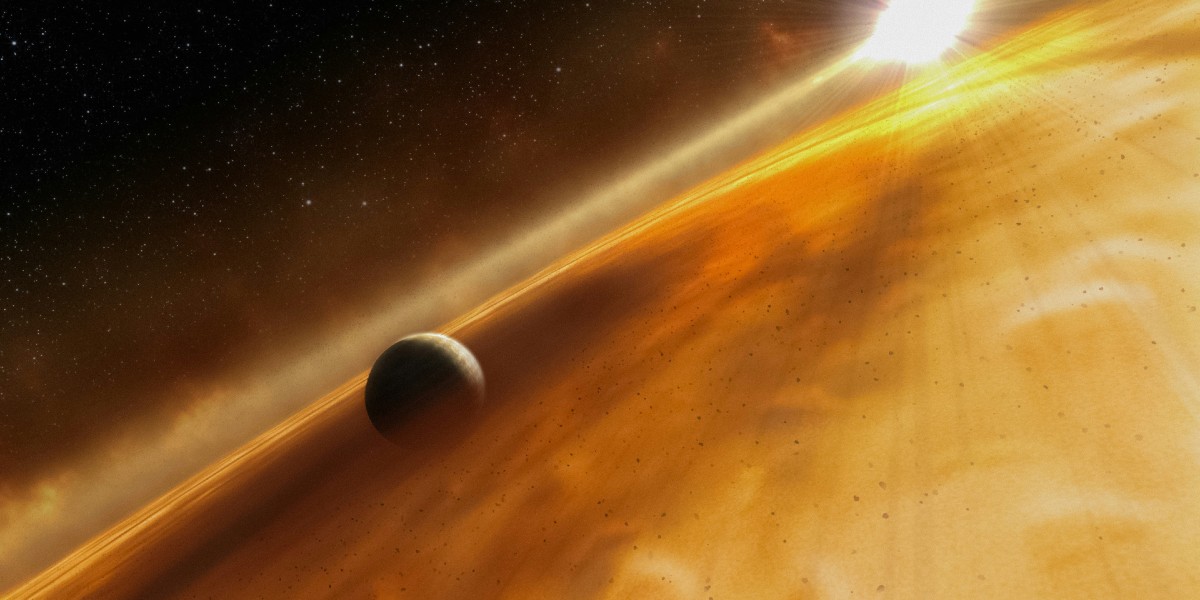Richard Panek is a journalist who has written five books about the biggest issues in the universe. His previous books include The 4% Universe: Dark Matter, Dark Energy, and the Race to Discover the Rest of Reality, which won the American Institute of Physics communication award and was longlisted for the Royal Society Prize for Science Books. He has received many fellowships and co-authored the New York Times bestseller The Autistic Brain: Thinking Across the Spectrum with Temple Grandin. His writing has appeared in the New York Times, Scientific American, Smithsonian, Natural History, and Outside, among other publications.
What’s the big idea?
The James Webb Space Telescope is gradually revealing the origin story of our universe and life itself. Observations seen through its lens often defy what astronomers expected to see. As researchers adjust their expectations and predictions, our understanding of genesis in the cosmos is rapidly changing.
Below, Richard shares five key insights from his new book, Pillars of Creation: How the James Webb Telescope Unlocked the Secrets of the Cosmos. Listen to the audio version—read by Richard himself—in the Next Big Idea App.

1. The James Webb Space Telescope is telling a story.
The James Webb Space Telescope began observing the universe in July 2022. Since then, it has produced a wealth of data in such a quantity that it’s easy to lose sight of a simple organizing principle—easy even for the astronomers who have gained their own precious few minutes on the telescope. I’ve asked many of the top experts in cosmology to name some of the telescope’s major contributions to their own very specific areas of specialization, and the answer I’ve heard again and again is: I wouldn’t know where to begin.
In the beginning, from the first spit-balling sessions in the 1980s and 1990s that eventually led to the launchpad in 2021, Webb was always going to be telling a story. Storytelling was part of its vision and mission. That story was, in a word, origins. The origin of the universe as we know it. The origin of our planet. The origin of our species. Webb was going to tell its story in four distinct parts—the parts correspond to my next four insights.
2. Our solar system.
In 1610, Galileo used a primitive version of a telescope to discover that Jupiter had moons. Who would have thought to wonder if Jupiter had moons, if Saturn had rings, or if there were many other planets, each with its own moons and rings?
Planets, moons, and rings are some of the targets of Webb’s investigations into our solar system. Specifically, astronomers want to know where water exists because water is assumed to be a precondition for life. What Webb has found is that water is just about everywhere in quantities and locations that nobody was expecting.
“What Webb has found is that water is just about everywhere in quantities and locations that nobody was expecting.”
Water is spouting through cracks in the icy surface of a moon of Saturn—a geyser reaching into space at least 10 thousand kilometers or 6,000 miles. Maybe most intriguing, according to one solar system expert, is the presence of water in the asteroid belt between Mars and Jupiter—a neighborhood that astronomers had previously assumed to be too distant from the Sun, and therefore too cold, to sustain liquid water. Did asteroids bombarding the infant Earth billions of years ago bring with them the seeds of life?
3. The stars and exoplanets in our galaxy.
Astronomers in the 17th, 18th, and 19th centuries found that the more they looked into our galaxy, the more stars they found. If those stars are like our own Sun, and if our own Sun hosts planets, then how many other solar systems are there?
Not until the 1990s did astronomers know for certain that some stars in our Milky Way galaxy do have planetary systems. Now, astronomers are using Webb to ask whether those systems might have water somewhere, or other properties that might portend the possibility of life: hydrogen, oxygen, carbon dioxide, and so on. Yes, yes, yes—and on and on indeed, Webb has found.
Not that the presence of certain elements and compounds predetermines the emergence of life. And not that “life” means sentient beings in possession of death rays or declarations of universal peace. But on a unicellular level? Better yet, a multicellular level? Our galaxy, whatever its prospects for life, is hardly alone.
4. Other galaxies.
There are hundreds of billions of galaxies crowding the cosmic landscape from here to the horizon—the horizon as defined by the Hubble Space Telescope, which can see back to about a billion years after the Big Bang. How did those galaxies evolve? How did our galaxy get here? Over the past couple of generations, some theorists have suggested a secret ingredient: dust.
“Our galaxy, whatever its prospects for life, is hardly alone.”
We’ve known since the 1950s that, as Joni Mitchell sang a decade later, we are stardust. When some stars get old, they explode, shedding their elements into the universe. But they don’t just spread the wealth. They enrich it. They make heavier and heavier elements. But over the past half a century, astronomers noticed that the universe seems to have more dust than exploding stars (supernovae) can account for.
Or can they? Can supernovae produce dust at such a rate that they affect the evolution of entire galaxies? Early results from Webb might support that idea.
5. In the beginning.
Webb can see farther than Hubble, but for astronomers, the question has been, how far? The first stars, supernovae, and galaxies didn’t form until 100 or 200 million years after the Big Bang, about 800 million years farther than Hubble could see. Can Webb see those sources of first light?
It’s trying, and it’s getting closer all the time, finding surprises along the way. Webb has seen more galaxies than theory predicted—more mature galaxies, more black holes, galaxies seemingly too young to be so large and bright, and black holes that are too massive. Supernovae too numerous. And that’s fine. That’s what Webb was designed to do: to see those earliest objects and to find out if observations match our expectations.
To the extent that observations don’t match expectations, theorists will have to figure out why. They’re challenging their assumptions, adjusting their expectations, and seeing if they can come up with models that make predictions to match what’s really out there. Webb is telling a story that is only just beginning.
To listen to the audio version read by author Richard Panek, download the Next Big Idea App today:






























